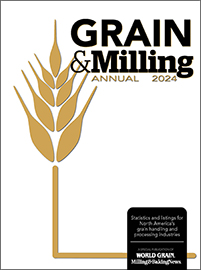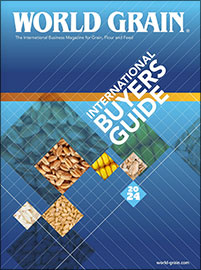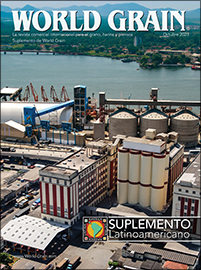Pressure on prices may be lessening amid signs of greater demand.
Photo courtesy of Adobe stock.
The International Grains Council (IGC) used its latest Grain Market Report (GMR), dated Jan. 19, to report firmer prices at least in some markets.
“In contrast, prices in Vietnam eased marginally, to $334, pressured by limited fresh buying interest, including from traditional importers. Outside of Asia, U.S. milled values (No.2, 4%) fell by 3%, to $393 fob, as exporters sought to stimulate buying interest.”
In December the FAO’s Rice Market Monitor sounded less bullish.
“Although prices have followed diverging trends depending on the origin and quality, harvest progress and subdued buying interest have tended to keep international rice prices in check in recent months,” the FAO said. “This was reflected in the FAO All Rice Price Index (2002-2004=100), which has hovered around a value of 185-186 points since October. Looking at the various market segments, a somewhat livelier pace of sales, together with Thai efforts to shore up local quotations, resulted in the Higher Quality Indica Index edging up to a mid-December value of 170 points, 1% over October levels. Livelier trading activity in the Far East similarly aided a two-point advance in the Japonica Index to 219 points.
“Yet, these gains were contrasted by a 1% decline in the value of the Aromatica and lower quality Indica indices, following the arrival of freshly harvested Hom Mali rice into the market and easing tightness of fully broken supplies.”
The FAO said from an annual perspective, international quotations in 2016 stood 8% below their levels in 2015, mirroring soft Japonica and Aromatic quotations.
“Indica prices tended to be less affected by the weakness, given production disruptions incurred in the first half of the year,” the FAO noted. “These stood 2% below 2015 levels in the case of higher quality Indica rice, but 2% over last year’s values in the case of lower quality Indica supplies.”
The USDA’s Economic Research Service (ERS), in its Rice Outlook report, published Jan. 17, cut its total rice crop figure, but the new level remains the largest ever. The 2016-17 global supply production was lowered 1.5 million tonnes to 480 million tonnes, up almost 2% from a year earlier and the highest on record, it said.
Source: World Bank
“Prices for Thailand’s 100% Grade B milled white rice were quoted at $379 per tonne for the week ended Jan. 9, unchanged from the week ended Dec. 6. Prices for Thailand’s parboiled 5% brokens — a specialty rice — were quoted at $370 per tonne for the week ended Jan. 9, up $4 from the week ended Dec. 6. Thailand’s premium jasmine rice remains quoted at $593 per tonne for the week ended Jan. 9, unchanged from the week ended Dec. 6.”
For the week ended Jan. 10, price quotes for Vietnam’s high-quality 5% broken kernels were quoted at $337 per tonne, unchanged from the week ended Dec. 6, the ERS said.
“Vietnam’s sales remain weak,” the agency noted. “For the week ended Jan. 10, Vietnam’s prices were $29 below price quotes for similar grades of Thailand’s rice, unchanged from a month earlier. Vietnam’s rice typically sells at prices $20 to $40 per tonne below prices for comparable grades of Thailand’s rice.”
U.S. prices for long-grain milled-rice continued to decline in what the ERS said was “a response to a bumper long-grain crop in 2016-17 and a lack of any new sales outside core markets.”
“For the week ended Jan. 10, prices for high-quality U.S. Southern long-grain rice (No. 2, 4% brokens, bagged, free on board (fob) vessel, U.S. Gulfport) were quoted at $450 per tonne, down $5 from the week ended Dec. 6,” the ERS said.
“The U.S. price difference over Thailand’s 100% Grade B milled rice was $71 per tonne, down slightly from $76 a month earlier. Prices for U.S. long-grain rough-rice (bulk, fob vessel, New Orleans) were quoted at $240 per tonne for the week ended Jan. 10, down $10 from the week ended Dec. 6.







